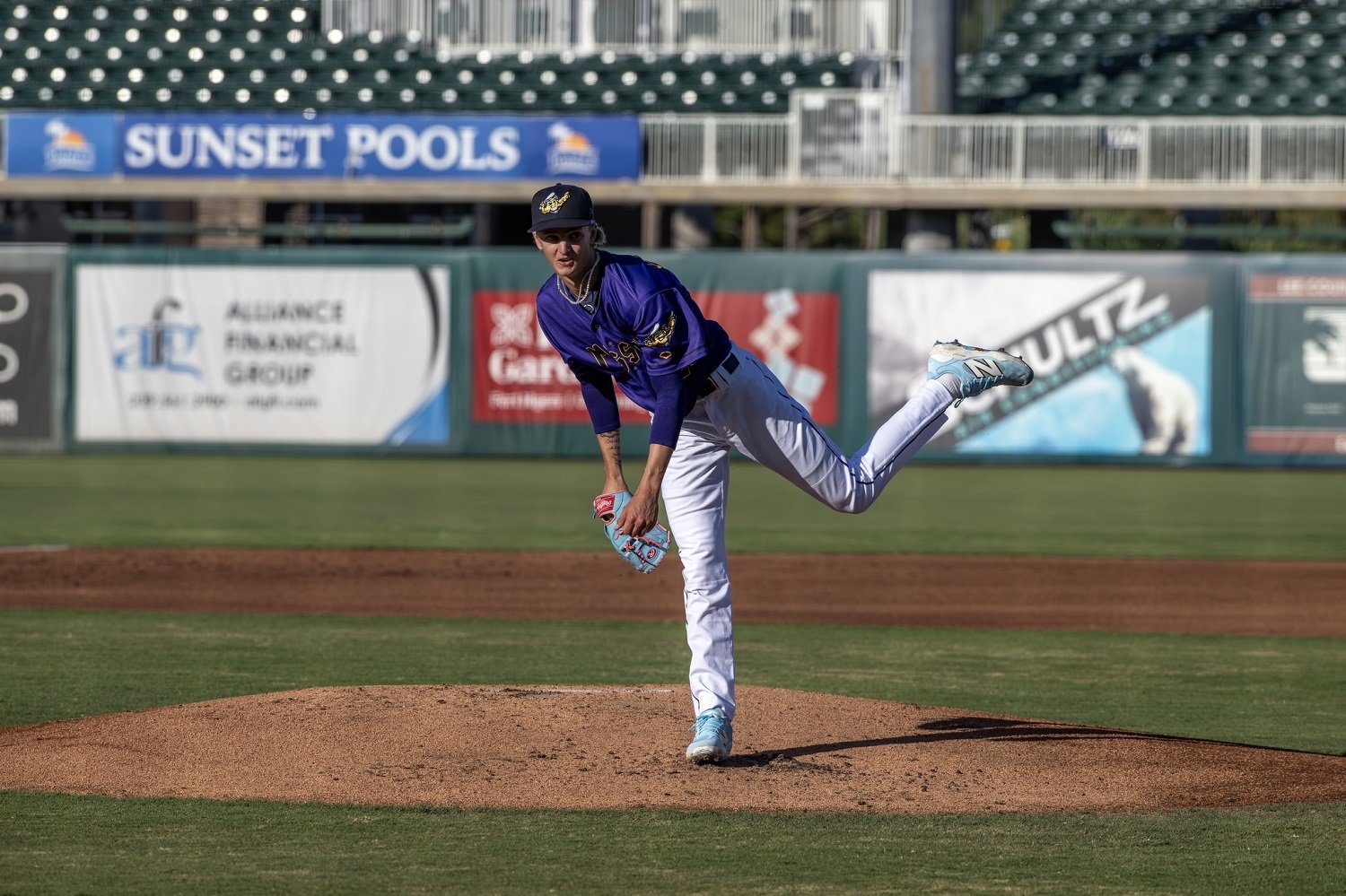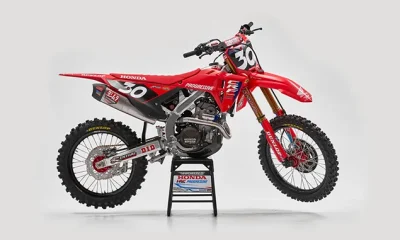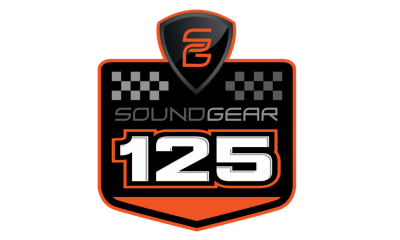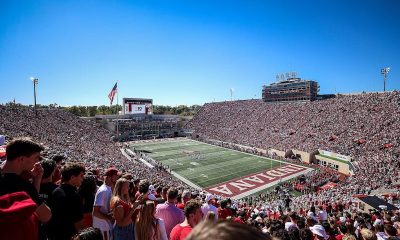Sports
The Minnesota Twins Have a New Top 100 Prospect



Twins Video
That didn’t take long. Just ten months after being drafted by the Minnesota Twins with the very nice 69th overall pick, Dasan Hill was named the 85th best global prospect by Baseball America. That feels aggressive for someone who, at the time of writing, has thrown 12 professional innings. Let’s talk about it.
Before we dig into strengths and opportunities from Hill’s early showing, it’s worth digging into the aggressiveness of the ranking. Here’s my working hypothesis. In general, the industry is trending towards a more frequent and more aggressive ranking of prospects. Why? Two reasons; with increasing prospect-based content, there’s pressure to be ‘first’ (or close to it) on a guy. That’s not a criticism of BA. I’m a paid, very happy subscriber. It’s simply calling out an observation. Secondly, and more relevantly; prospect numbers 70-125 are fairly interchangeable.
So what about Hill, eh? How has he looked? How is he performing? What do the first glimpses of his arsenal tell us about him?
There are some clues in his signing of how bullish the Twins were on Hill. They signed him for $2 million to forgo his commitment to DBU. That’s towards the upper end of prep bonuses outside the first round of the 2024 draft. Next, the frame. He’s listed at 6’5, 160 pounds. He’s definitely put on some good weight since being drafted, but it’s easy to see the vision here. A prospect whose velo popped into the mid-90s pre-draft with a premium projectable frame.
The early returns have been encouraging. Hill has made four appearances, the most recent of which he was removed from after 1.1 innings with back tightness. He’s been pretty dominant so far in his age-19 season. 12 innings pitched, a 2.84 FIP, a 43.8 K%, and a 10.4 BB%. Insert your own small sample size caveat here, but that’s an encouraging start. I’ve caught most of Hill’s starts this season and there are two tangible takeaways; no one at Low-A can touch his breaking/off-speed stuff, and the strikes can come and go. I’d expect the latter to be true for a prep draftee in their first professional season. Hill has thrown 60% strikes in 2025 (dragged down by his most recent appearance). He’ll need to be closer to 70% when it’s all said and done.
Hill throws from a higher three quarter slot. There’s some deception in the delivery with a little crossfire there. He keeps the ball hidden well behind his head through his delivery. Hill doesn’t have much extension, a trait the Twins seem to like in their pitchers (Ober, Pablo, Paddack etc.)
Hill has two fastball shapes, a four seamer and a two seamer, the latter being what he is relying on more heavily early in his pro career. Hill’s fastballs are probably his least interesting pitch currently. It’s the one that’s potentially going to get damaged by right-handed hitters as, against righties specifically, he’s leaving it over the heart of the plate significantly more (~15%) than against lefties. Still, we should note the wins too. Hill has added velo since joining the Twins. In his spring training outings, his fastball was up to 99 mph. So far in game action, it’s touched 98 mph. That’s going to create some margin for error.
Hill’s secondary pitches are where he separates himself for a pitcher so young. He has three offerings, a slider, curveball, and changeup, all of which look strong in the early going.
Hill’s slider averages 81.7 mph. I’d expect that to firm up through his pro career. It has two plane movement, both sweep and drop and through those first 12 innings, is generating a whiff rate north of 60%. It looks like a nightmare for Low-A hitters. The curveball looks similar, just with around 9 inches more drop than the slider. This pitch sits at 79.2 mph on average (this will need to creep up, too). While it’s not as good a pitch as the slider, what’s been impressive is Hill’s ability to command it. He can consistently place it on the bottom right corner of the strike zone against right-handed hitters, rendering anyone unable to do much with it.
Finally, Hill’s changeup. This will be a crucial pitch in helping to neutralize right-handed hitters. This might be his best pitch. It gets a ton of late fade and is averaging over 15 inches of horizontal break, thrown around 84 mph on average, close to an ideal velocity separation from his fastballs.
There’s plenty to work on here and we’re taking a peak at very small sample sizes with Hill in his pro debut. What I would say stand out early on, are the quality of depth of the pitches in his arsenal, in addition to his ability to command some of his off-speed and breaking pitches effectively. That’s not a combination you often see in a prep draftee in their first pro season. Let’s hope we get to see plenty more in 2025.
Interested in learning more about the Minnesota Twins’ top prospects? Check out our comprehensive top prospects list that includes up-to-date stats, articles and videos about every prospect, scouting reports, and more!
Sports
Slekis Announces 2026 T&F Slates & Staff Updates

THIBODAUX, La. – Nicholls State University track and field coach Stefanie Slekis announced the 2026 schedule along with the hiring of assistant coach Cameron Bolt on Monday afternoon.
Nicholls will compete in two in state meets and two out of state meets for the indoor season. The teams will begin the season in Baton Rouge at the LSU Purple Tiger on Jan.16 followed by the McNeese Indoor II on Jan. 30. The Colonels will cross state lines to compete in the Bulldog Invitational hosted by Samford University on Feb. 13 before concluding the season at the Southland Conference Championship on Feb. 25-26.
The outdoor season is action packed with three out of state completion’s and four instate events. The Red & Gray will begin outdoor action at the Louisiana Classics hosted by Louisiana in Lafayette on March 20-21. Next, the squads will open the month of April in Austin, Texas at the Texas Relays on April 1-4. The Colonels return to the boot for the Pelican Relays (4/10-11), Strawberry Relays (4/17), and the LSU Alumni Gold (4/25). Nicholls will wrap up regular season action at Texas A&M’s Alumni Muster in College Station, Texas on May 1-2. The Southland Conference Championship is in Nacogdoches, Texas on May 14.
Coach Slekis is looking forward to the new season with some new opportunities for her student-athletes. Bolt joins the staff after coaching over 200 National qualifiers, 15 All-Americans, four National Champions. Additionally, he is the owner of Bolt Track and Field Club team that he started in 2023 and has had more than 20 National qualifiers.
We are so excited for our 2026 Indoor and Outdoor Track & Field schedule. For our schedule we changed up the second half of both our Indoor and Outdoor seasons from the past few years,” Slekis said. “Indoor we will head to Birmingham to compete at Samford’s Bulldog invitational which will give our team the opportunity to test themselves on the facility we will return to for the indoor championship. Outdoor we close out the season at two of the best SEC track & field programs in the country who have phenomenal facilities. Going first to LSU and then bringing full teams to Texas A & M for the Alumni Muster. Before we return to Texas for the Southland Championship hosted by SFA.”
Coach Slekis gave her overall thoughts on the addition of Coach Bolt and how he can help the team improve.
“We are changing things up a bit this year and I am also really excited to see how well our student-athletes perform this season especially our track & field only student-athletes who had the entire fall semester working with our new assistant coach Cameron Bolt,” Slekis said. “Cam comes with a wealth of knowledge as a young coach who founded his own track & field club and continuously worked to prepare himself for his first NCAA Division I collegiate coaching opportunity. His energy combined with his knowledge base make him a phenomenal hire. He understands how to develop student-athletes and maximize their potential. Through fall testing his event group has seen improvement across the board so it will be fun to see that hard work translate to their specific events this next semester.”
Sports
Wisconsin volleyball beats Texas in four to reach Final Four
Sports
Four Zips Named to the 2025 Academic All-MAC Volleyball Team

CLEVELAND, Ohio – The Mid-American Conference announced the 78 student-athletes placed on the Academic All-MAC Team for the 2025 volleyball season, as Martina Villani, Gabby Brissett, Vanessa Del Real and Sarah Bettis represented the University of Akron.
The Academic All-MAC honor is awarded to a student-athlete who has excelled in both athletics and academics. To qualify, a student-athlete must have a cumulative GPA of at least 3.20 and have participated in at least 50 percent of the contests in that sport.
- Martina Villani, Junior Criminology and Criminal Justice, 3.861
- Gabby Brissett, Senior, Biology, 3.745
- Vanessa Del Real, Junior, Speech-Language Pathology & Audiology, 3.81
- Sarah Bettis, Junior, Biomedical Science, 3.363
Sports
Five Rockets Receive Academic All-MAC Honors

Senior Macy Medors led the Rockets, tallying a 3.989 GPA as she earned her third conference honor. Anna Alford and Sierra Pertzborn received the honor for a second-consecutive season. Grace Freiberger and Olivia Heitkamp were named honorees for the first time.
To qualify, student-athletes must be a sophomore or higher academic standing, have maintained a 3.20 cumulative GPA or higher and competed in 50% of contests during the 2025 season.
2025 Toledo Women’s Volleyball Academic All-MAC Team
Anna Alford, Senior, Public Health Management, 3.415
Grace Freiberger, Sophomore, Recreational Therapy, 3.909
Olivia Heitkamp, Sophomore, Early Childhood Education, 3.501
Macy Medors, Senior, Recreational Therapy, 3.989
Sierra Pertzborn, Redshirt Sophomore, Nursing, 3.558
Sports
ESPN serves up NCAA Division I Women’s Volleyball Semifinals and Championship, Dec. 18 & 21


- Kansas City field consists of No. 1 Kentucky, No. 1 Pitt, No. 3 Texas A&M and No. 3 Wisconsin
- Championship broadcast live on ABC for the third straight year; semifinals slated for ESPN, Thu., Dec. 18
- All matches will also stream on the ESPN App
It all comes down to Kansas City as ESPN’s exclusive coverage of the NCAA Division I Women’s Volleyball Championship culminates this week live from the T-Mobile Center with the National Semifinals on Thursday, Dec. 18, followed by the Championship match on Sunday, Dec. 21.
The stage is set as the final four teams face off in the semifinals beginning with No. 3 Texas A&M vs. No. 1 Pittsburgh in the first semifinal on Thursday, Dec. 18, at 6:30 p.m. ET, followed 30 minutes later by No. 3 Wisconsin vs. No. 1 Kentucky. Both matches will be presented on ESPN and available on the ESPN App.
For the third consecutive year, ABC is home to the Championship match, broadcasting live on Sunday, Dec. 21, at 3:30 p.m. and for the first time, ABC will also air a dedicated 30-minute preview show ahead of the Championship’s first serve, beginning at 3 p.m. Both the preview show and the match will be available on the ESPN App.
On the Mic
For the fourth straight year, game action for all three matches will be called by play-by-play commentator Courtney Lyle, alongside analysts Holly McPeak (three-time beach volleyball Olympian) and Katie George (2015 ACC Player of the Year). For the second consecutive year, the trio is joined by sideline reporter and former FSU beach volleyball standout Madison Fitzpatrick.
Studio Coverage
Studio Coverage will originate from the T-Mobile Center as Christine Williamson, Emily Ehman (four-year Northwestern standout) and Mary Wise (three-time AVCA Coach of the Year) bring viewers pre- and post-game insights and analysis throughout the semifinals and Championship.
The trio will prep viewers for all they need to know ahead the National Semifinals and National Championship match, bringing additional insight and analysis as a champion is crowded.
Every Serve, Every Angle
ESPN has all the action in Kansas City covered from every angle, including exclusive and behind-the-scenes coverage. This year, along with 25-plus cameras and two dozen replay sources, ESPN will have new and enhanced telestrations, giving the fans an additional in-depth look at the Xs and Os of the game.
Additionally, the presentation will have multiple jibs, giving fans a sweeping view over the arena. ESPN will also use six state-of-the-art slow-mo cameras to give viewers a look at the action at the net.
For the first time at the National Championship, the broadcast will feature Bolt 6, showcasing enhanced technology that shows viewers serve speed, spike speed, spike height and other statistical facets of the game.
In addition to the traditional main telecast, an alternate “High End Zone” viewing option will be available on ESPN+/ESPN App for the semifinals and the Championship, giving fans the option to watch the match from the end zone angle.
Kansas City Bound
The National Semifinals boast programs that have made a combined 15 national semifinal appearances. Pittsburgh is making its fifth consecutive trip to the National Semifinal with a No. 1 seed behind them as the Panthers look to hoist their first NCAA trophy. The Wildcats are making their first trip back to the semifinals since the ’20-21 season in which they cut down the nets in Omaha. Storied program Wisconsin makes its seventh trip to the national semifinals, looking to win the program’s second national title (2021). Rounding out the field are the Texas A&M Aggies, who are on the quest to win the program’s first national championship.
2025 NCAA Division I Women’s Volleyball Championship
| Date | Time (ET) | Match | Network |
| Thu, Dec 18 | 6:30 p.m. | No. 3 Texas A&M vs. No. 1 Pittsburgh Courtney Lyle, Holly McPeak, Katie George, Madison Fitzpatrick |
ESPN ESPN App * |
| Between Match Coverage | NCAA Women’s Volleyball Studio Christine Williamson, Emily Ehman, Mary Wise |
ESPN ESPN App * |
|
| 30 mins after Semifinal 1 | No. 3 Wisconsin vs. No. 1 Kentucky Courtney Lyle, Holly McPeak, Katie George, Madison Fitzpatrick |
ESPN ESPN App * |
|
| Sun, Dec 21 | 3 p.m. | NCAA Division I Women’s Volleyball Championship Preview Show Christine Williamson, Emily Ehman, Mary Wise |
ABC ESPN App |
| 3:30 p.m. | NCAA Division I Women’s Volleyball Championship Courtney Lyle, Holly McPeak, Katie George, Madison Fitzpatrick |
ABC ESPN App * |
|
| Following Championship match | NCAA Division I Women’s Volleyball Trophy Ceremony | ESPN App |
* There will be two streams available on the ESPN App (Traditional Simulcast and High End Zone angle)
All of ESPN. All in One Place.
ESPN offers its full suite of networks and services directly to fans on the ESPN App, providing more choice, flexibility and access to all of ESPN, including more than 47,000 live events per year, on-demand replays, industry-leading studio shows and original programming, and more. The ESPN App gives fans a unique viewing experience that includes multiview and synchronized two-screen viewing options, swipe-able vertical video and a personalized SportsCenter For You, as well as integrated game stats, ESPN Fantasy sports, betting odds and information from DraftKings, sports merchandise, and more. These features are available to all fans who watch on the ESPN App on mobile and connected TV devices, whether they subscribe directly or through a pay TV package. Bundling options available for fans include a limited time offer for the ESPN DTC Unlimited plan with Disney+ and Hulu for $29.99/month for the first 12 months. For more visit stream.espn.com.
Sports
Reilly Named AVCA Player of the Year Finalist – University of Nebraska
-

 Rec Sports3 weeks ago
Rec Sports3 weeks agoFargo girl, 13, dies after collapsing during school basketball game – Grand Forks Herald
-

 Motorsports3 weeks ago
Motorsports3 weeks agoRedemption Means First Pro Stock World Championship for Dallas Glenn
-

 Motorsports2 weeks ago
Motorsports2 weeks agoJo Shimoda Undergoes Back Surgery
-

 NIL2 weeks ago
NIL2 weeks agoBowl Projections: ESPN predicts 12-team College Football Playoff bracket, full bowl slate after Week 14
-

 Rec Sports2 weeks ago
Rec Sports2 weeks agoHow this startup (and a KC sports icon) turned young players into card-carrying legends overnight
-

 Motorsports6 days ago
Motorsports6 days agoSoundGear Named Entitlement Sponsor of Spears CARS Tour Southwest Opener
-

 Rec Sports2 weeks ago
Rec Sports2 weeks agoRobert “Bobby” Lewis Hardin, 56
-

 NIL3 weeks ago
NIL3 weeks agoIndiana’s rapid ascent and its impact across college football
-

 Motorsports2 weeks ago
Motorsports2 weeks agoPohlman admits ‘there might be some spats’ as he pushes to get Kyle Busch winning again
-
Sports2 weeks ago
Wisconsin volleyball sweeps Minnesota with ease in ranked rivalry win
































